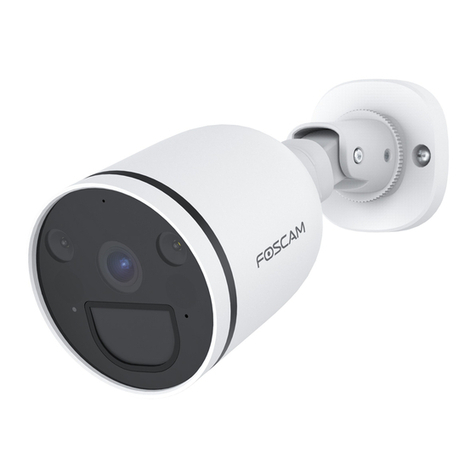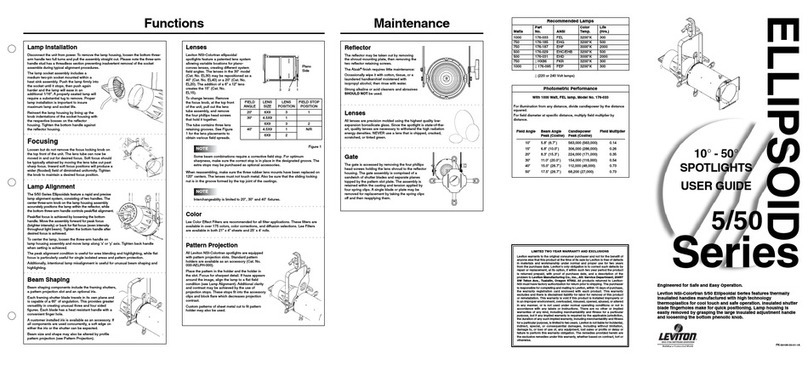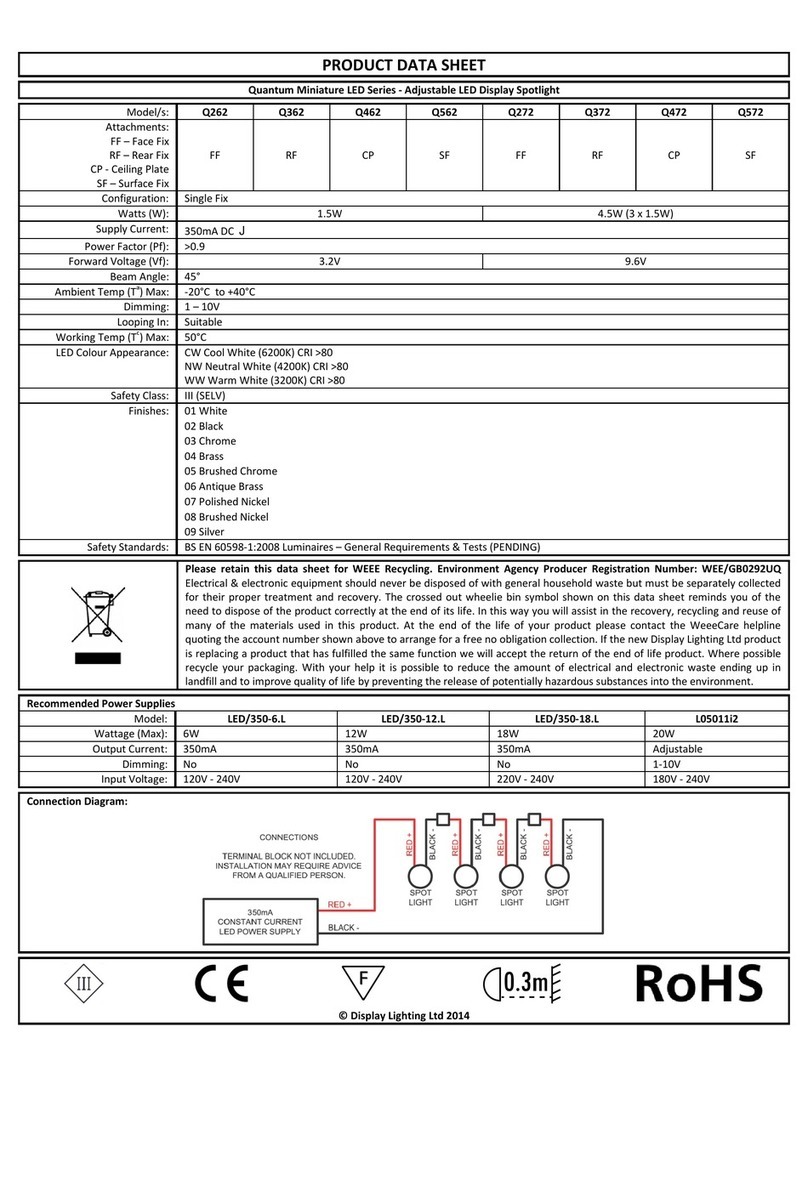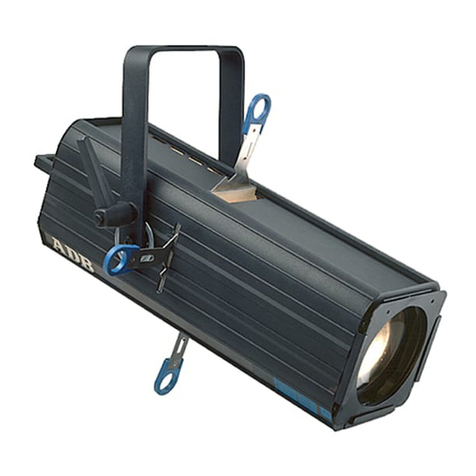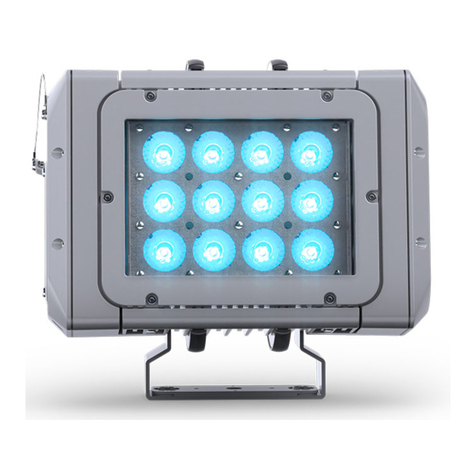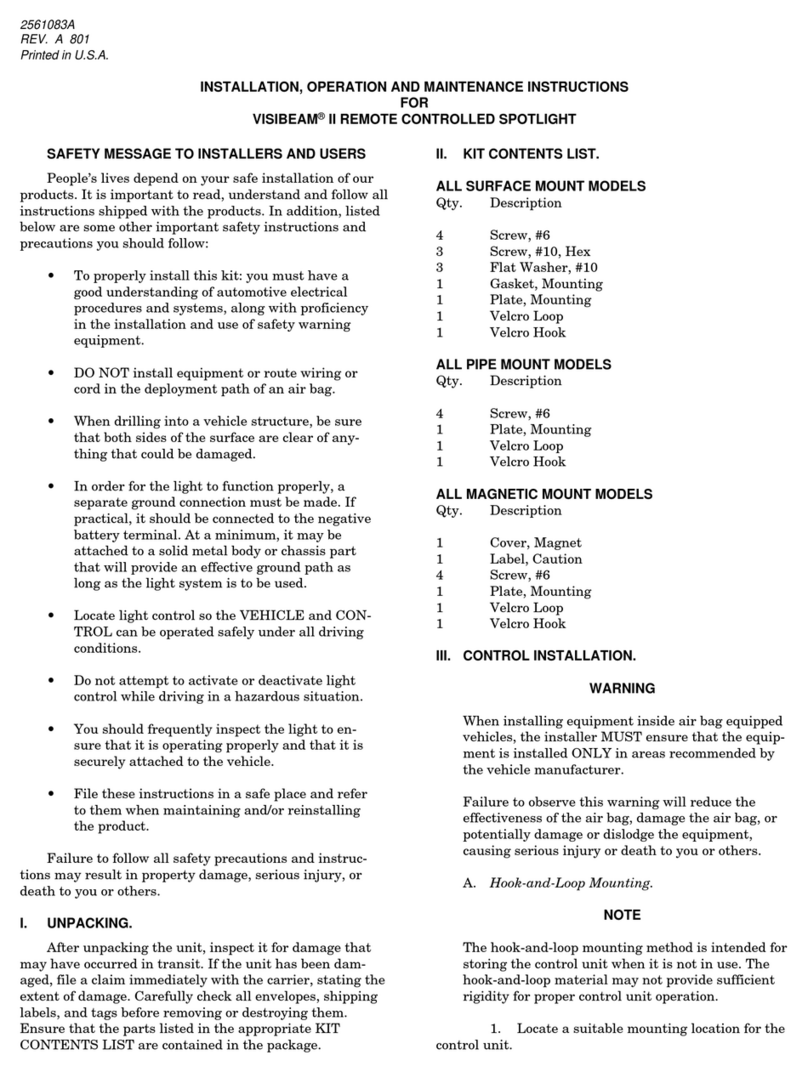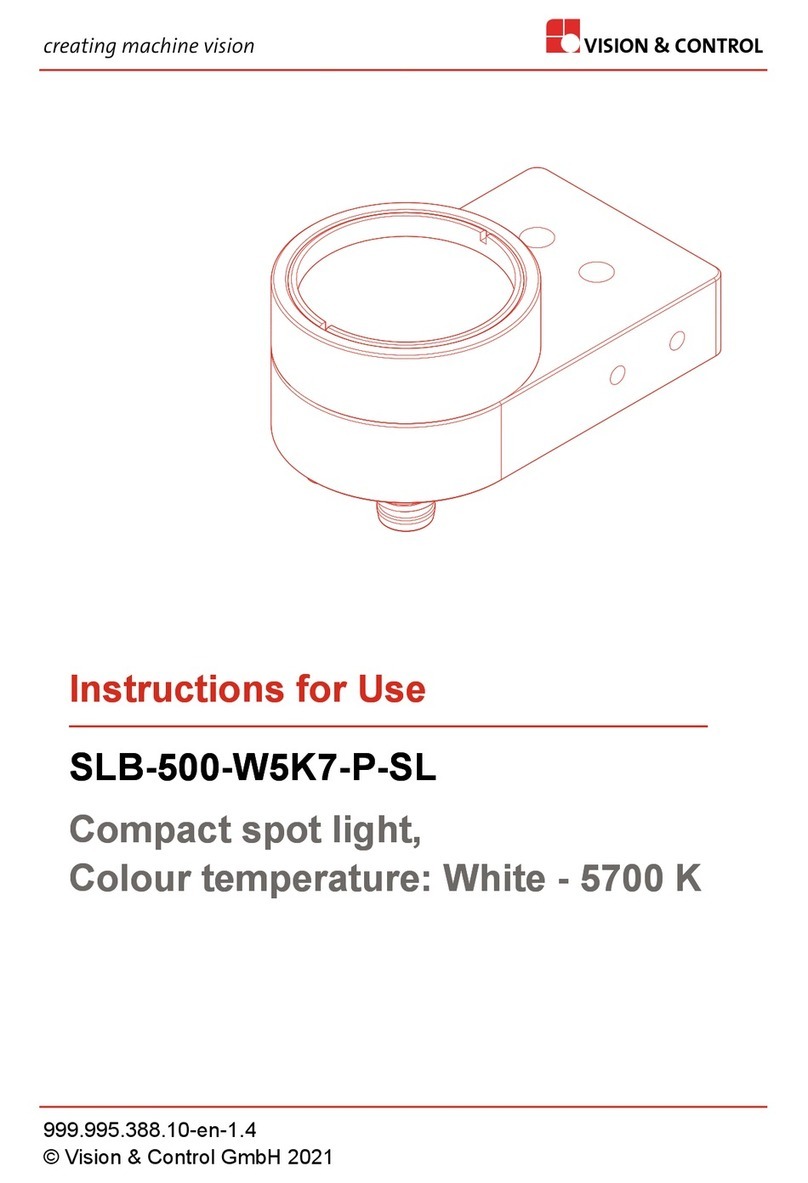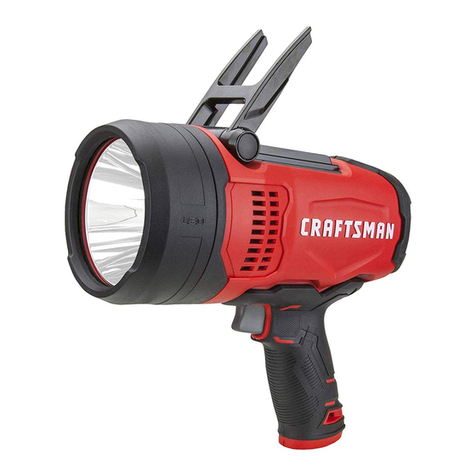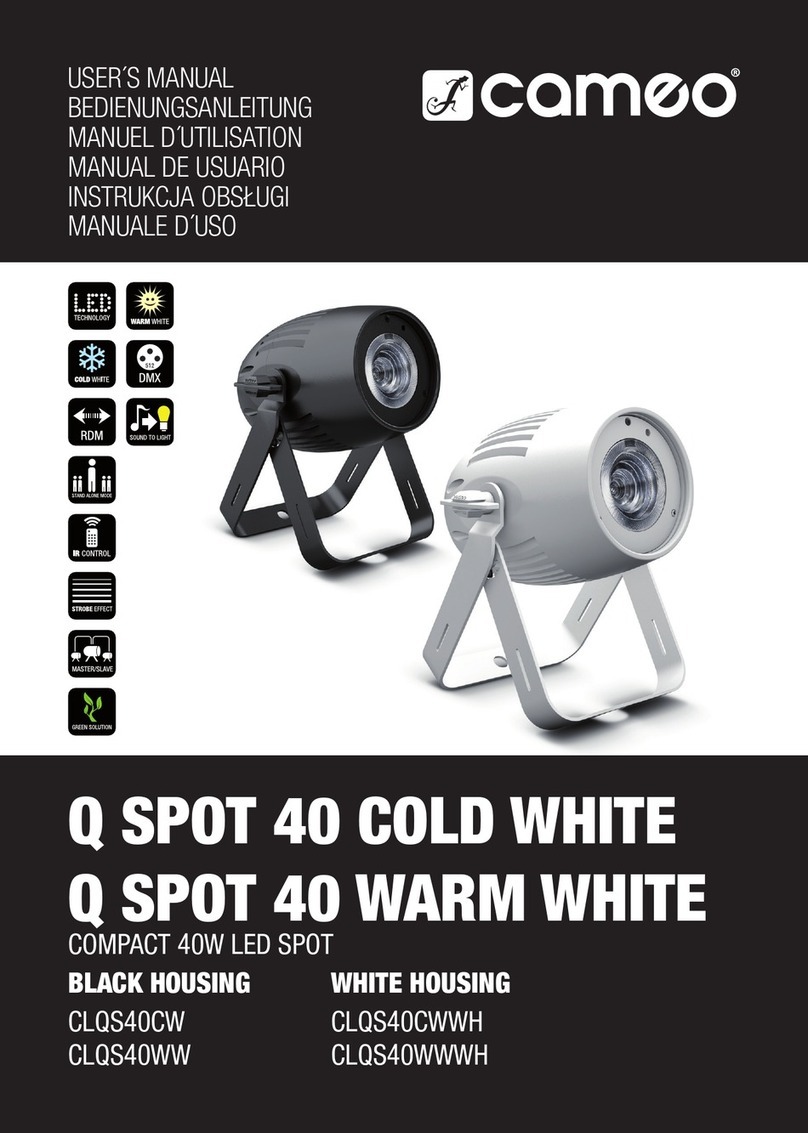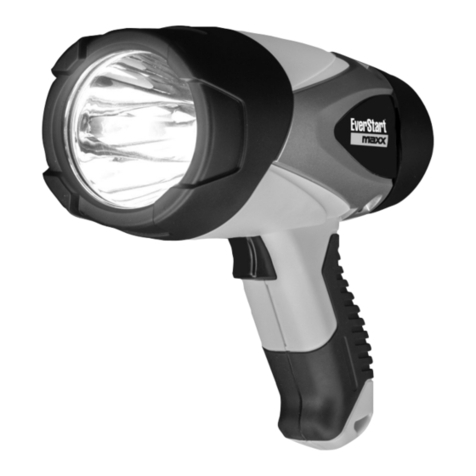0.35100.0000
CABLAGGIO ELETTRICO
Il driver di alimentazione LED LUCE1 è appositamente studiato per
massimizzarele prestazioni edèparte integrante diquestoapparecchio
di illuminazione.
Esso soddisfa le norme di sicurezza - IEC 61347, prestazionali - IEC
62384, nonchè quelle di compatibilità elettromagnetica cogenti.
È vietato l'uso di driver alternativi.
Negli apparecchi ad incasso, il driver è fornito come gruppo indipen-
dente (fig.6).
Tensione di alimentazione 175-265V 50/60Hz (connettore nero).
Caratteristiche complete riportate sull'etichetta del driver (fig.7)
N= blu; L= marrone, utilizzare conduttori a doppio isolamento con
sezioni non superiori a 2,5 mm2.
LED LUCE1 viene connesso direttamente al driver mediante il connet-
tore precablato verde.
CABLAGGI TIPO Z
Pericablaggi di tipo Z: il cavo flessibile esterno di questo apparecchio
non può essere sostituito; se il cavo è danneggiato, l’apparecchio deve
essere distrutto.
È disponibile come accessorio cavo di prolunga da 3,3m precablato
Cod. 0.35100.0000 per eventuali necessità di allontanare il driver dal
punto luce. Per necessità di maggiore distanza è possibile sommare
più prolunghe fino a un massimo di 10m. (fig.8/9)
DIMMERAZIONE
Il driver 1x16W può essere dimmerato agendo direttamente sulla ten-
sione di alimentazione mediante un regolatore a taglio di fase (TRIAC)
di adeguata potenza (16w per singolo punto luce)
Il driver 4x16W consente la dimmerazione del flusso luminoso sfrut-
tando un segnale in tensione continuo 0-10V. Il comando, trasmesso
mediante un doppino, deve essere cablato collegando il polo + al
morsetto L, il polo - al morsetto N del connettore verde sempre
sul lato primario del driver.
EMERGENZA
Il modulo LED LUCE1 può essere trasformato in un dispositivo di
emergenza, semplicemente abbinandolo all’accessorio 0.35070.0000.
NOTE DI GARANZIA
Per gli apparecchi Reggiani che utilizzano i LED LUCE1 è possibile richie-
dere l’estensione della garanzia. Sul sito www.reggiani.net sono riportate le
condizioni e il modulo di registrazione.
RIFERIMENTI NORMATIVI
Conformità: Norme europee
CEI EN 60598-2-5, CEI EN 60598-1, CEI EN 60598-2-1,
CEI EN 60598-2-2, CEI EN 62471÷2008.
Direttive Comunitarie BT 73/23, EMC 89/336 e CEE 93/68.
Fig./Abb 9
ITALIANO ENGLISH DEUTSCH FRANÇAIS ESPAÑOL
ELECTRICAL WIRING
The LUCE1 LED driver has been designed to maximize performance
and is an integral part of this luminaire.
It conforms to safety requirements - IEC 61347, and performance
requirements - IEC 62384, as well as to electromagnetic compatibility
requirements in force.
Never use any other type of driver.
In recessed luminaires, the driver is supplied as a separate unit (fig.6).
Power supply: 175-265V 50/60Hz (black connector).
Overall characteristics are to be found on the driver label (fig.7).
N= blue; L= brown, use double insulated wires with a cross section
of max. 2.5 mm2.
LUCE1LED is connecteddirectlyto thedriverusing the prewiredgreen
connector.
TYPE Z WIRING
FortypeZ wiring: it isnotpossible to replace theexternalflexiblecable
of this luminaire; if the cable is damaged, the luminaire should be
destroyed.
A prewired 3.3 m extension cord, Code 0.35100.0000, is available as
an accessory if you need to move the driver away from the luminaire.
If greater distance is needed, several extension cords can be connect-
ed to a maximum length of 10 m. (fig.8/9)
DIMMING
The driver 1x16W can be dimmed by directly varying the voltage using
a phase cutting (TRIAC) adequately rated (16W for each luminaire).
The driver 4x16W makes it possible to dim the luminous flux using a
0-10V direct voltage signal. The signal, transmitted by a twisted pair,
must be wired connecting the positive (+) pole to terminal L and
the negative (-) pole to terminal N of the green connector, always
on the primary side of the driver.
EMERGENCY LIGHTING
The LUCE1 LED module can be transformed into an emergency light-
ing device by simply combining it with accessory 0.35070.0000.
NOTE ON WARRANTY
Itispossible torequestanextendedwarrantyforReggianiluminairesfeatur-
ing LUCE1 LEDs. The conditions and registration form can be found at
www.reggiani.net
REFERENCE STANDARDS
Conformity: European Standards CEI EN 60598-2-5, CEI EN 60598-
1, CEI EN 60598-2-1, CEI EN 60598-2-2, CEI EN 62471÷2008.
European Community Directives
LV 73/23, EMC 89/336 and 93/68/EEC.
VERDRAHTUNG
Der Treiber für LED LUCE1 wurde ausgelegt, um die Leistungen zu maximie-
ren und ist ein wesentlicher Bestandteil dieser Leuchte.
Der Treiber erfüllt die Sicherheitsanforderungen nach IEC 61347, die
Anforderungen an die Arbeitsweise nach IEC 62384 sowie die entsprechenden
Vorschriften in Bezug auf die elektromagnetische Verträglichkeit.
Andere Treiber dürfen nicht verwendet werden.
BeidenEinbauleuchtenwird derTreiberalsseparate Einheitgeliefert(Abb. 6).
Anschlussspannung: 175–265 V 50/60 Hz (schwarzer Steckverbinder).
Die kompletten Eigenschaften sind am Etikett des Treibers (Abb. 7) aufgeführt.
N= Blau, L= Braun – doppelt isolierte Leiter mit einem Querschnitt von min-
destens 2,5 mm2verwenden.
LEDLUCE1 wirdüberden bereitsverdrahtetengrünenSteckverbinderdirekt an
den Treiber angeschlossen.
Z-VERDRAHTUNGEN
für Z-Verdrahtungen: Das externe flexible Kabel dieser Leuchte kann nicht
ersetzt werden; wenn das Kabel beschädigt ist, kann die Leuchte nicht mehr
benutzt werden und ist zu entsorgen.
AlsZubehörerhältlichisteinbereitsverdrahtetesVerlängerungskabelzu 3,3 m
(Art. 0.35100.0000), wenn der Treiber eventuell vom Lichtpunkt entfernt wer-
den muss. Sollte eine größere Entfernung erforderlich sein, können mehrere
Verlängerungen bis maximal 10 m angeschlossen werden. (Abb. 8/9).
DIMMBARKEIT
Der Treiber 1 x 16 W kann direkt auf der Anschlussspannung über eine
Phasenanschnittsteuerung (TRIAC-Regler) mit angemessener Leistung (16 W
für jeden einzelnen Lichtpunkt) gedimmt werden.
Der Treiber 4x16 W ermöglicht das Dimmen des Lichtstroms unter Nutzung
eines Gleichspannungssignals 0–10 V. Das Signal wird über eine Doppelader
übertragen und muss durch den Anschluss des Pluspols an die Klemme L
und des Minuspols an die Klemme N des grünen Steckverbinders auf der
Primärseite des Treibers verdrahtet werden.
NOTLICHT
Das Modul LED LUCE1 kann in eine Noteinrichtung umgewandelt werden.
Hierzu einfach mit dem Zubehör 0.35070.0000 kombinieren.
HINWEISE ZUR GEWÄHRLEISTUNG
FürdieReggiani-LeuchtenmitLEDLUCE1kanndieErweiterungderGewährleistung
angefordert werden. Auf der Website www.reggiani.net finden Sie die entsprechen-
den Bedingungen und das Registrierungsformular.
NORMATIVE VERWEISUNGEN
Konformität: Europäische Normen
CEI EN 60598-2-5, CEI EN 60598-1, CEI EN 60598-2-1,
CEI EN 60598-2-2, CEI EN 62471÷2008.
EG-Richtlinien 73/23 (Niederspannung), 89/366 (EMV) und 93/68/EWG.
CÂBLAGE ÉLECTRIQUE
Partie intégrante de cet appareil d'éclairage, le driver de LED LUCE1 a
été spécialement conçu pour en décupler les performances.
Ilrépondauxnormesenvigueurrelatives aux prescriptions de sécurité
– CEI 61347, de performance – CEI 62384, ainsi qu’aux normes en
matière de compatibilité électromagnétique.
Défense d’utiliser des drivers alternatifs.
Dans les appareils à encastrer, le driver est fourni en tant que platine
indépendante (fig.6).
Tension d’alimentation : 175-265V 50/60Hz (connecteur noir).
Les caractéristiques complètes figurent sur l’étiquette du driver (fig.7).
N= bleu; L= marron, utiliser des conducteurs double isolation pré-
sentant des sections de 2,5 mm2maximum.
Le LED LUCE1 est directement raccordé au driver au moyen du
connecteur vert pré-câblé.
CÂBLAGES DE TYPE Z
PourlescâblagesdetypeZ:lecâbleflexible externe de cet appareil ne
peut pas être remplacé ; en cas d'endommagement du câble, l'appareil
devra être détruit.
Un câble de rallonge pré-câblé de 3,3 m est fourni en tant qu’acces-
soire - Réf. 0.35100.0000 – pour pouvoir éloigner le driver du point
lumière si besoin est. Possibilité, pour couvrir de plus grandes dis-
tances, de mettre plusieurs rallonges bout à bout jusqu'à 10 mètres
maximum (fig. 8/9).
GRADATION
Possibilité de gradation pour le driver 1x16W en agissant directement
sur la tension d’alimentation au moyen d’un variateur (TRIAC) possé-
dant une puissance adéquate (16W par point lumière).
Le driver 4x16W assure la gradation du flux lumineux à l'aide d'un
signal en tension continue 0-10V. Transmise par le biais d'un câble
duplex, la commande doit être reliée en raccordant le pôle + à la
borne L et le pôle – à la borne N du connecteur vert, toujours sur
côté primaire du driver.
ECLAIRAGE DE SECOURS
Le LED LUCE1 peut se transformer en un dispositif de secours: pour
cela, il suffit de l'associer à l’accessoire 0.35070.0000.
REMARQUES SUR LA GARANTIE
Possibilité,pourlesappareilsReggianiéquipésdesLEDLUCE1,dedeman-
der une extension de garantie. Les conditions et le formulaire d’inscription
se trouvent sur le site www.reggiani.net
CADRE REGLEMENTAIRE
Conformité: Normes européennes
CEI EN 60598-2-5, CEI EN 60598-1, CEI EN 60598-2-1,
CEI EN 60598-2-2, CEI EN 62471÷2008.
Directives communautaires : BT 73/23, CEM 89/336 et 93/68/CEE.
CABLEADO ELÉCTRICO
El driver de alimentación LED LUCE1 se ha estudiado especialmente
para aumentar las prestaciones y es parte integrante de este aparato de
iluminación.EsconformeconlasnormasdeseguridadIEC61347,con
los requisitos de funcionamiento IEC 62384 y, también, con las nor-
mas de compatibilidad electromagnética cogentes.
Está prohibido usar otros drivers.
Enlosaparatosde empotrar,el driver se suministra comoequipoinde-
pendiente (fig. 6).
Tensión de alimentación 175-265V 50/60Hz (conector negro).
Todaslascaracterísticassedescribenenlaplacadefábricadeldriver(fig. 7).
N= azul; L= marrón, use conductores de doble aislamiento con sec-
ciones no superiores a 2,5 mm².
LED LUCE1 se conecta directamente con el driver mediante el conec-
tor cableado verde.
CABLEADOS ELÉCTRICOS DE TIPO Z
Para los cableados eléctricos de tipo Z :
el cable flexible externo de este aparato no puede sustituirse. Cuando
el cable se dañe, el aparato debe eliminarse.
Como accesorio, la serie dispone de cable de prolongación de 3,3m
cableado (Cód. 0.35100.0000) a usar cuando se debe alejar el driver
desdeelpunto luz. En caso de queseanecesarioalejarlomás, se pue-
den unir varios cables de prolongación hasta alcanzar, como máximo,
los 10m. (fig. 8/9).
REGULACIÓN
El driver 1x16W puede regularse actuando directamente sobre la ten-
sión de alimentación mediante un regulador con corte de fase (TRIAC)
de adecuada potencia (16W para cada punto luz).
El driver 4x16W permite regular el flujo luminoso mediante una señal
en tensión continua 0-10V. El comando, transmitido mediante un par
torcido, debe cablearse conectando el polo + con el borne L, el
polo – con el borne N del conector verde, siempre en el lado pri-
mario del driver.
EMERGENCIA
ElmóduloLEDLUCE1puedetransformarseenundispositivodeemer-
gencia combinándolo simplemente con el accesorio 0.35070.0000.
NOTAS DE GARANTÍA
Para los aparatos Reggiani que usan los LED LUCE1 se puede pedir la
extensión de la garantía. En el sitio www.reggiani.net se describen las
condiciones y podrá hallar el modelo de inscripción.
REFERENCIAS NORMATIVAS
Conformidad:
NormaseuropeasCEIEN60598-2-5,CEIEN60598-1,CEIEN60598-2-1,
CEI EN 60598-2-2, CEI EN 62471÷2008.
Directivas CEE BT 73/23, EMC 89/336 y CEE 93/68.
